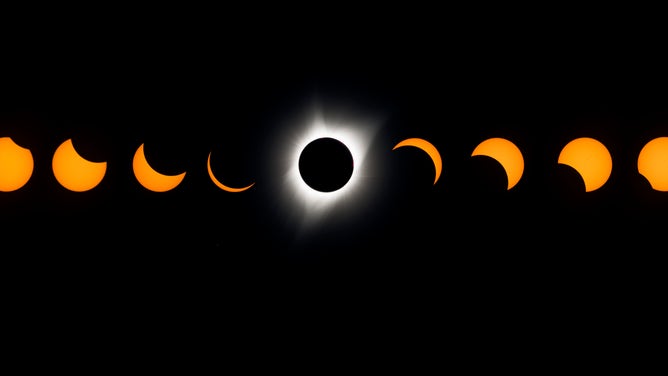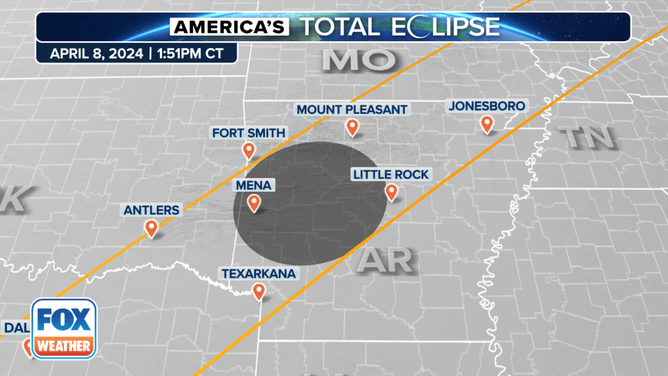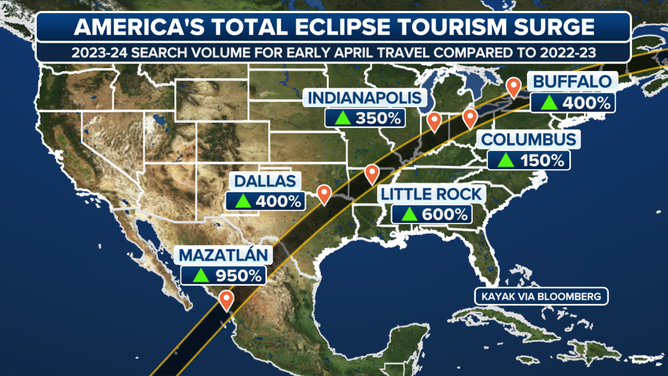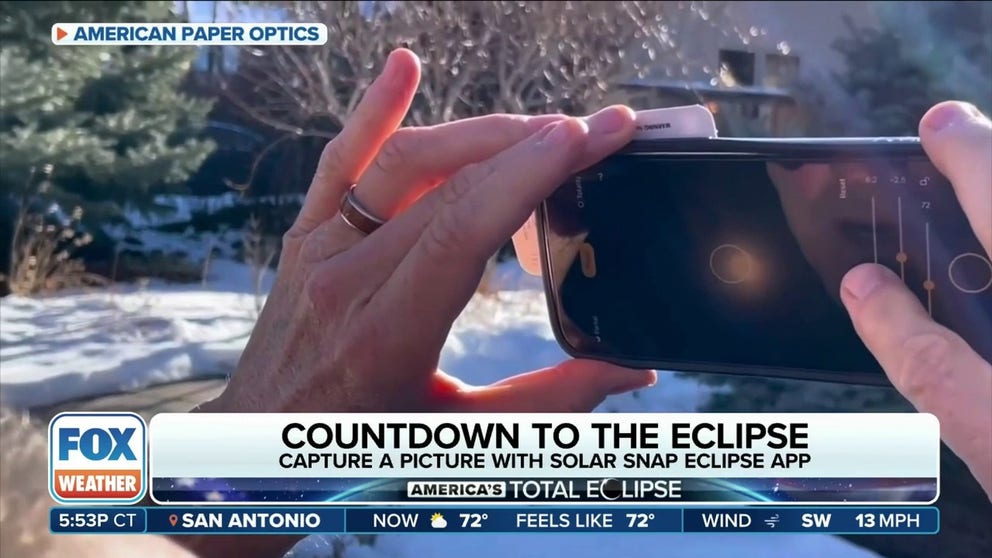Where to see the total solar eclipse in Arkansas on April 8th
On April 8th, a total solar eclipse will sweep from Texas to Maine, offering millions the chance to see totality. Here’s what you need to know about viewing the eclipse in Arkansas.
How to take stunning photos of the eclipse with your phone
More than 30 million Americans are estimated to live in the path of totality, with many millions more expected to travel to the 15 states where the event will be visible.
Thousands of people are getting ready to watch the total solar eclipse in Arkansas, which will pass through the state from its southwest corner to its northeast tip.
FOX WEATHER WIRE LIVE COVERAGE: TOTAL SOLAR ECLIPSE APRIL 2024
Arkansas has only experienced a total solar eclipse three times in history - in 1834, 1918, and most recently in 2017. The next total solar eclipse visible in Arkansas won't occur until 2045.
If you're fortunate enough to be in certain areas of the Natural State, you'll witness over four minutes of total darkness on April 8th when the Moon blocks out the Sun.
Here’s what you need to know about viewing the eclipse in Arkansas.
What is a total solar eclipse?
A total solar eclipse happens when the Moon passes between the Sun and the Earth, completely blocking the face of the Sun for several minutes.

A composite image of the total solar eclipse seen from the Lowell Observatory Solar Eclipse Experience August 21, 2017 in Madras, Oregon.
(Stan Honda / Getty Images)
From partial eclipse through totality, the process takes several hours. The final moments before totality include displays of light known as Baily's Beads and the Diamond Ring caused by the pock-marked surface of the Moon.
Where can I see the total solar eclipse in Arkansas?
There are many options for viewing the total solar eclipse in Arkansas, whether you enjoy being on the water, in the city, away from crowds, or at a park or museum.
The path of totality will span over 100 miles across the state and will cover 53 of Arkansas' 75 counties, which includes cities such as Little Rock, Hot Springs, Texarkana, Conway and Jonesboro.

Total solar eclipse path for Arkansas and Oklahoma on April 8, 2024.
(FOX Weather)
What time is the solar eclipse in 2024?
A total solar eclipse is an hours-long event from partial eclipse through totality and partial eclipse again. However, totality will last between a few seconds to over 4 minutes, depending on where you are within the path of totality.

HOUSTON, TEXAS - OCTOBER 14: Astronauts answer questions via live video feed from the International Space Station in the background as people view the eclipse during the Space Center Houston Annular Eclipse Celebration and viewing event at NASAs John Space Center Saturday, Oct. 14, 2023.
(Kirk Sides/Houston Chronicle via Getty Images / Getty Images)
The path of the total solar eclipse in Arkansas covers the entire length of Interstate 30 from Texarkana to Little Rock. Additionally, the path includes Interstate 40 from Atkins to almost Lonoke. The eclipse will begin at 1:45 p.m. and end at 2 p.m. CDT.
During this time, the Moon's shadow will speed up from about 1,700 mph to about 1,850 mph as it moves through the state, according to GreatAmericanEclipse.com.
What will the weather be like in Arkansas for the eclipse?
A clear sky is key to watching a total solar eclipse.
TOTAL SOLAR ECLIPSE LIVE TRACKER: CLOUD FORECASTS FOR CITIES, STATES IN PATH OF TOTALITY
The FOX Forecast Center has put together the cloud cover forecast shown on the map below, showing areas with an overcast sky, many clouds or few clouds during the eclipse. As the eclipse nears, computer forecast models will improve and be able to give forecasters a better idea of what the sky will look like on the big day.

(FOX Weather)

(FOX Weather)
Below is a look at what to expect in the hours before and after the eclipse for Little Rock.

(FOX Weather)
TOTAL SOLAR ECLIPSE FORECAST SHOWS WHO HAS BEST CHANCE FOR CLEAR SKIES ON APRIL 8TH
Check back with FOX Weather for updates to the forecast as the date of the eclipse approaches, and add your viewing location to the "Events" tab in the FOX Weather app.
What to know about traveling to Arkansas for the 2024 solar eclipse
Arkansas is gearing up for an extremely rare event. The state expects large crowds, including visitors from out of state and even out of the country, who will attend weekend festivals and watch the eclipse the following Monday.
Motorists are advised to plan ahead if they want to view the eclipse. Know where you want to be and make accommodations as early as possible.
Hot Springs National Park is one of the Arkansas attractions that will experience totality during the upcoming event. The park is one of two national parks in the path of totality.
If you choose to view the eclipse from the park, it's important to plan ahead due to the anticipated high volume of visitors in the days leading up to and during the event, state officials warn.

Eclipse tourism surge in 2023-2024.
(FOX Weather)
HERE'S WHAT NOT TO DO DURING THE TOTAL SOLAR ECLIPSE ON APRIL 8TH
Plan to arrive at your viewing location early and stay long after the eclipse to avoid the most traffic. Bring plenty of food, water, sunscreen and gas up your vehicle.
Print out a map or bring an Atlas. During totality and after, internet connections and cellphone networks may be overloaded.
When is the next total solar eclipse in the US?
After April 8, 2024, the next total solar eclipse won't happen in parts of the U.S. until 2044. According to Timeanddate.com, it will cover a swath of Canada and a small portion of the northern Plains. Another eclipse in August 2045 will cover a much larger portion of the U.S.
